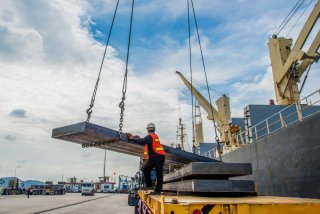An Entrepreneurial Development Bank? The Inter-American Development Bank Shows the Way
A new multilateral endeavor aims to help U.S. businesses unlock billions of dollars in untapped economic opportunities in the Latin America and Caribbean region.
There is no love lost between the public and development banks. While these multilateral institutions with a global scope, such as the World Bank or regional ones like the Asian Development Bank, play a vitally important role by providing financial and technical assistance to enhance development, they are incessantly criticized across the board.
Development banks are faulted for their lack of transparency and accountability, particularly regarding their decision-making processes, along with their failure to adequately engage with civil society and other stakeholders in their operations. Borrowers from developing nations accuse these banks of coercive conditions required for loans, and civil society blames the multilateral banks for exacerbating existing social and economic inequalities in recipient countries. At the other extreme are nationalists and isolationists who believe funding multilateral banks is equivalent to throwing money away that could better be spent at home.
Regardless of where one comes out on the issues of development banks, the fact is that these multilateral institutions lend billions of dollars to developing nations for projects aimed at accelerating growth and social development, improving health and education, and advancing infrastructure initiatives and good governance. One should not forget that at a time when few institutions were lending during the global financial crisis, multilateral banks provided $222 billion in financing, proving critical to global stabilization efforts.
Recognizably, development banks’ programs and operations can be highly bureaucratic, cumbersome, unimaginative, and uninspiring—which is why the development community, governments, the private sector, and the public at large should cheer a new, groundbreaking initiative of the Inter-American Development Bank (IDB)—BID for the Americas. This entrepreneurial endeavor aims to help U.S. businesses unlock billions of dollars in untapped economic opportunities in the Latin America and Caribbean region. The program focuses on three pillars to engage the U.S. private sector: public procurement, trade and investment, and financing. Leveraging innovative technologies and financial tools will be crucial for U.S. businesses to participate in the tremendous economic opportunities that the region presents.
The IDB is the region’s largest source of multilateral financing and approved $12.2 billion in new projects in 2022. In total, U.S. exports to the region amounted to over $720 billion in goods and services annually.
The BID for the Americas program’s initiatives include strategic partnerships, roadshows, policy advocacy efforts, and new digital connection platforms and resources. The aim is to help increase the participation of U.S. firms in over $4 billion of contracts financed by IDB every year, focusing on the health, water, energy, transport, agriculture, and digital infrastructure sectors. In addition to organizing state-level IDB roadshows to facilitate connections between U.S. and LAC firms, BID for the Americas intends to partner with the U.S. Chamber of Commerce and other business organizations to raise awareness. Finally, the IDB will develop a dedicated section within ConnectAmericas.com, the IDB’s Business-to-Business (B2B) social network, where U.S. firms can access information about all IDB-funded procurements.
As for the trade and investment pillars, the program will leverage the IDB’s expertise and network to facilitate business connections and partnerships between U.S. and regional firms.
Regarding the financing pillar, the IDB will mobilize resources from its public and private windows to support projects that involve U.S. companies. The program will expand outreach to U.S. companies and U.S.-based entrepreneurs through IDB Invest, the private sector arm of IDB, which finances over $10 billion of private sector programs per year, and through IDB LAB, which supports early-stage entrepreneurial innovations. The IDB will also organize networking activities with co-financing partners, investors, and U.S. government institutions to promote participation in future bond issuances and other innovative investment opportunities.
To illustrate the potential of BID for the Americas for U.S. small and medium-sized firms, one needs to look no further than Interport Logistics, a Miami-headquartered supply chain, warehousing, and distribution company. The BID for the Americas program will encourage participation by our customer base of small and medium-sized enterprises (SMEs), as well as Interport. It will help level the playing field with SME competitors from other nations, and the platform will allow our customers to easily tap into ConnectAmericas, IDB Invest, and IDB LAB—other business facilitation sources.
While U.S. firms win over sixty-one percent of all IDB-financed contracts they bid for—the highest success rate of all non-borrowing member countries—they are less likely to bid for large contracts. BID for the Americas aims to change that by providing private firms and institutions with a platform to expand in the Americas while helping to grow and develop the region.
BID for the Americas could be a harbinger of a broader—more entrepreneurial—approach to private sector-focused economic development, foster greater SME involvement of U.S. firms in business in the Americas, and show the way for other multilateral development banks to advance their constituents’ economic goals and objectives.
Jerry Haar is a business professor at Florida International University and a fellow of both the Woodrow Wilson Center and the Council on Competitiveness.
Gary Goldfarb is Chief Strategy Officer at Interport Logistics and vice chairman of the World Trade Center Miami.
Image: Shutterstock.com.

